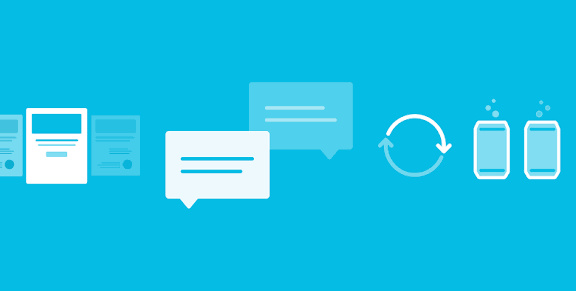Introduction to UX Testing and Its Importance
User Experience (UX) testing is a fundamental practice in product development that focuses on evaluating how real users interact with a product or service. It encompasses a variety of techniques to assess usability, accessibility, and overall satisfaction. Through UX testing, developers gather valuable insights into user behaviors, preferences, and pain points, which are critical for creating effective solutions that meet user needs.
The importance of UX testing cannot be overstated in today’s competitive landscape. A well-executed UX testing strategy not only enhances the product’s usability but also fosters a positive relationship between the user and the brand. Users who have pleasant experiences with a product are more likely to remain loyal and recommend it to others, thereby driving organic growth and reducing marketing costs. Furthermore, improved user satisfaction often translates into increased retention rates, which are essential for the long-term success of any product.
In addition to elevating user satisfaction, effective UX testing can lead to significant financial benefits for organizations. When potential usability issues are identified early in the development process, teams can address them before they escalate into expensive fixes. This proactive approach can help avert costly redesigns, prolonged development timelines, and unsatisfactory user experiences post-launch. As a result, understanding how to implement and refine UX testing methods directly impacts a project’s budgetary constraints and overall efficiency.
This section serves to underscore the critical role of UX testing in product development and sets the stage for an exploration of specific methodologies that can help streamline the design process while saving costs. Investing in UX testing is not merely an additional expense but a strategic approach that can lead to optimized user interfaces and substantial savings throughout the product lifecycle.
Method 1: Usability Testing
Usability testing is a critical methodology in the realm of user experience (UX) design that focuses on evaluating a product’s interface by observing real users as they interact with it. The primary objective is to identify any usability issues that may hinder a user from completing tasks efficiently. Conducting usability tests early in the development cycle allows teams to gain valuable insights into user behavior and preferences, ultimately enhancing the overall user experience.
There are two main types of usability testing: moderated and unmoderated. Moderated usability testing involves a facilitator who guides participants through the test, asking follow-up questions and probing deeper into users’ thought processes. This approach allows for immediate feedback and clarification, which can be beneficial in gathering detailed insights. In contrast, unmoderated usability testing requires users to complete tasks independently, often in a remote setting. This method is typically more cost-effective and can provide quicker results, though it may lack the interactive depth provided by moderated sessions.
The outcomes of usability testing can reveal significant pain points and areas for improvement, such as navigation challenges, unclear instructions, or design inconsistencies. By pinpointing these issues before the product launch, teams can address them proactively, leading to better user satisfaction and retention. The financial implications are substantial; rectifying usability problems in the early stages can result in considerable cost savings compared to making changes post-launch, when fixing issues can be more complex and expensive.
In this fast-paced digital landscape, usability testing emerges as a vital practice that can help organizations streamline their development processes. The insights gained not only inform better design decisions but also culminate in products that resonate with users, thereby reducing the risk of costly revisions in the future.
Method 2 : A/B Testing: A Methodlogical Approach to User Experience Optimization
A/B testing, also known as split testing, is a valuable method utilized by designers and marketers to compare two or more variations of a webpage or feature. This process is instrumental in determining which option yields better performance based on user interaction metrics. The fundamental objective of A/B testing is to enhance user experience and maximize conversion rates, ultimately leading to significant savings in development costs.
To effectively implement an A/B test, one must follow a structured approach. First, identify the specific element of the webpage you wish to test, such as a call to action, image, or layout. Next, create two or more versions of that element, ensuring that each variation is distinct yet retains the core message. For instance, one might test different button colors or varied text in call-to-action phrases. Once the variations are ready, you can utilize software tools designed for A/B testing to segment traffic and deliver alternatives to users randomly.
After the test is live, data collection begins. During this phase, it is critical to monitor user interactions, including clicks, engagement time, and conversion rates. The duration of the test should be long enough to gather a statistically significant amount of data, eliminating the risk of bias due to smaller sample sizes. Once the test concludes, analyze the results meticulously to understand which variation performed better and why. This analysis will often highlight user preferences and behaviors that may not have been apparent initially.
Employing A/B testing as part of the design process allows for data-driven decisions that can significantly enhance user experience while reducing the likelihood of expensive redesigns in the future. By relying on empirical evidence, organizations can fine-tune their digital products, ensuring that they meet user expectations and achieve strategic business goals. Thus, A/B testing emerges as a cost-effective method within UX testing strategies that can lead to substantial financial benefits over time.
Method 3: Accessibility Testing
Accessibility testing plays a crucial role in user experience (UX) design by ensuring that digital products are usable for individuals with disabilities. This approach not only aligns with ethical standards but also with legal requirements. By complying with accessibility guidelines, such as the Web Content Accessibility Guidelines (WCAG) standards, developers can produce inclusive designs that cater to a broader audience. These guidelines outline specific criteria to enhance the usability of websites and applications for people with visual, auditory, motor, and cognitive impairments.
Common tools for accessibility testing include automated solutions, such as Axe, WAVE, and Lighthouse. These tools can help identify issues related to color contrast, keyboard navigation, and screen reader compatibility. However, automated testing should complement manual testing methods, including usability assessments and user testing with individuals who have disabilities. By employing both testing approaches, developers can gather comprehensive insights into the accessibility of their products.
Addressing accessibility issues during the design and development phases can significantly reduce costs in the long term. By identifying and rectifying potential problems early, organizations can avoid the high expenses associated with retrofitting accessible features later. Furthermore, prioritizing accessibility can mitigate legal risks, as many jurisdictions enforce laws surrounding the accessibility of digital content, such as the Americans with Disabilities Act (ADA). Implementing accessibility testing allows developers to adhere to these regulations while also expanding their market reach. In this way, ensuring that products are accessible not only enhances user satisfaction but also supports economic benefits derived from capturing a wider audience.
In the long run, UX testing isn’t an expense — it’s an investment. Start integrating these three methods into your workflow today and watch how much smoother your product launches (and budgets) become. The earlier you test, the less you’ll spend fixing mistakes later.







Leave a Reply